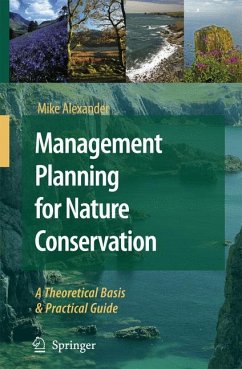This is the first planning guide to meet the requirements of Natura 2000 sites and it brings a new dimension to the modern literature on conservation management. Combining key theories with real practice it fills a critical gap which has often hindered understanding of the planning process. The book provides historical and rational background which helps to explain what makes a really effective management plan, and it presents a practical guide to developing such a plan. It concludes with a series of case studies which illustrate the underlying principles drawn out in the text, while highlighting the different approaches demanded by very different sites.
From the book reviews:
"This book is essential for nature conservation planners and managers from academia and various governmental and private agencies. Summing Up: Highly recommended. Upper-division undergraduates through professionals/practitioners." (R. L. Smith, Choice, Vol. 51 (8), April, 2014)
"I was very happy to recommend this book to my undergraduate and postgraduate students as soon as I obtained a copy. This is a hands-on book, and offers an informative outline of what management planning for conservation entails in practice, including how to develop an action plan, which is a skill that standard academic texts seldom provide. One striking aspect of the book is its logical structure, and plain but authoritative tone." (Munir Morad, International Journal of Environmental Studies, Vol. 66 (3), 2009)
"This book is essential for nature conservation planners and managers from academia and various governmental and private agencies. Summing Up: Highly recommended. Upper-division undergraduates through professionals/practitioners." (R. L. Smith, Choice, Vol. 51 (8), April, 2014)
"I was very happy to recommend this book to my undergraduate and postgraduate students as soon as I obtained a copy. This is a hands-on book, and offers an informative outline of what management planning for conservation entails in practice, including how to develop an action plan, which is a skill that standard academic texts seldom provide. One striking aspect of the book is its logical structure, and plain but authoritative tone." (Munir Morad, International Journal of Environmental Studies, Vol. 66 (3), 2009)

